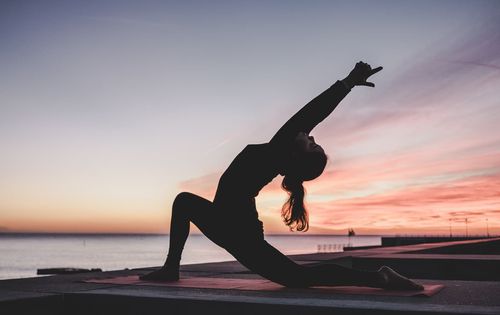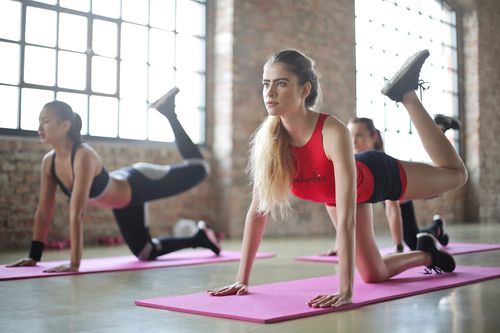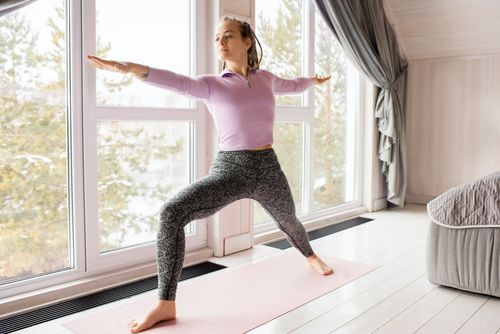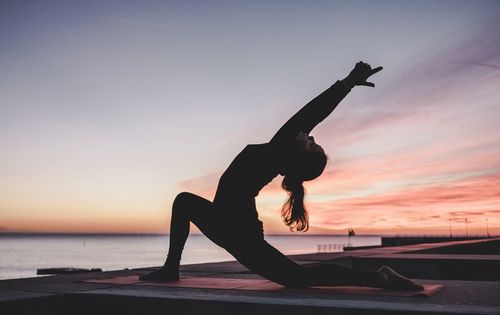What is Iyengar Yoga?
Iyengar yoga is a yoga system that focuses on integrating props when performing postures called asanas. It was developed by yoga teacher B.K.S. Iyengar and designed to create an integration of the body, mind, and spirit. It is based on the traditional eight limbs of yoga that were outlined in an ancient text by renowned sage Patanjali in the Yoga Sutras.

How Does Iyengar Yoga Work?
Iyengar yoga has three aspects, namely technique, sequencing and timing. Technique refers to the student learning how to refine and perfect the execution of the asanas and breaths called Pranayama. Sequencing refers to the sequence of how the asanas and Pranayama should be carried out. Timing is the amount of time spent by the student in a particular asana or Pranayama, and it can be changed to enable a more in-depth exploration of the asana or Pranayama. It should be remembered that poses cannot be quickly moved into or out as it generally takes time to achieve stability and awareness.
Iyengar yoga teaches the concept of "meditation in action". Simply put, the concept refers to the awareness of the students of the different parts of their bodies as they are executing various yoga poses. The mind will initially focus on the individual body parts but with training and experience, it will learn to focus on the body as a whole.
What are the Benefits of Iyengar Yoga?
Since Iyengar yoga heavily focuses on the correct alignment of the body, it can help eliminate or alleviate the aches and pains and correct the posture of the body. Also, it can improve the quality of life among people with chronic low back pain. Additionally, it has the following benefits to offer:
- Reduces stress and anxiety
- Increases energy levels
- Lowers blood pressure
- Increases flexibility
- Tones muscles
- Develops a calmer mind
- Relieves pain
- Protects the body from disease
- Promotes better food and lifestyle choices
- Improves breathing
A study published in the journal "Evidence-Based Complementary and Alternative Medicine" in 2016 suggests that the symptoms of women with breast cancer who are undergoing chemotherapy, such as dyspnea, appetite loss, constipation, and diarrhea, have improved after integrating Iyengar yoga into their therapeutic exercises.
What Can You Expect From Iyengar Yoga?
An Iyengar yoga class has a mix of both beginners and more seasoned participants. It's important to maintain an open mind and the desire to perfect each asana when arriving to the class.
Avoid wearing overly loose or baggy clothing as this prevents the yoga instructor from gauging your body's alignment. A single asana can be modified to get the most out of the stretch, and trying modifications can give the most benefit. Yoga is a personal journey so bear in mind that everyone in class is also learning, even the instructor, so there is no need to compete with anyone.
An Iyengar yoga class can last for 60 minutes to an hour and a half. Using props helps the participants achieve a pose more easily and fully experience its effects. Props are also helpful for participants who are tired or ill, serving as a support to help them receive greater gain from a position than they would be able to get otherwise.
These are the props typically used in Iyengar yoga:
- Blocks
- Straps
- Cushions
- Benches
- Belts
- Chairs
Is Iyengar Yoga Safe?
People of all ages can benefit from Iyengar yoga, from children and teenagers to adults and senior citizens, because it's safe, slow-paced and therapeutic. The use of props allows students, especially those with an injury, to get into and out of poses safely but accurately. If they cannot achieve a pose, the teacher modifies it to suit their state of health and level of fitness.




